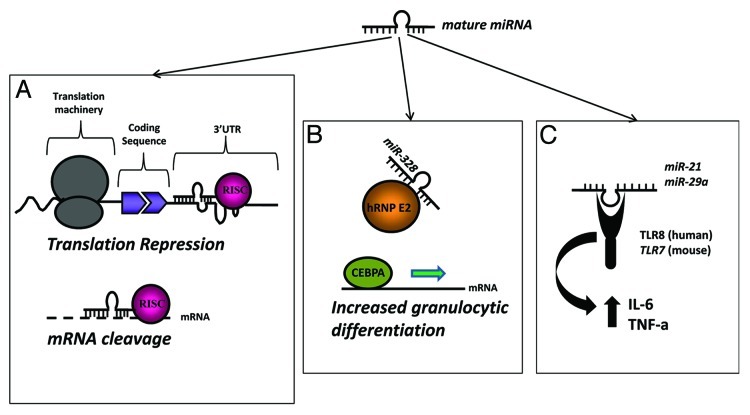Figure 1. Different mechanisms of action of mature microRNAs. (A) The “classical” mechanism of action of mature miRNAs consists in their binding to a partially (upper panel) or completely (lower panel) complementary sequence in a target mRNA leading to translational repression or mRNA cleavage, respectively. (B) MiRNAs can also bind to proteins and affect their function. The case of miR-328 is here described. By directly binding to hRNP E2, miR-328 functions as a decoy and subtracts hRNP E2 from binding to and inhibiting CEBPA. As a result of miR-328-hRNP E2 interaction, CEBPA is able to bind to target mRNAs exerting its transcription factor function leading to increased granulocytic differentiation. (C) MiRNAs can also bind to proteic receptors and activate them. Here we describe the mechanism of action of miR-21 and -29a, released by cancer cells within MVs, and able to bind to TLR8 (in humans) or TLR7 (in mice) in surrounding immune cells. As a result of this interaction, immune cells release IL-6 and TNF-α which promote cancer growth.

An official website of the United States government
Here's how you know
Official websites use .gov
A
.gov website belongs to an official
government organization in the United States.
Secure .gov websites use HTTPS
A lock (
) or https:// means you've safely
connected to the .gov website. Share sensitive
information only on official, secure websites.
